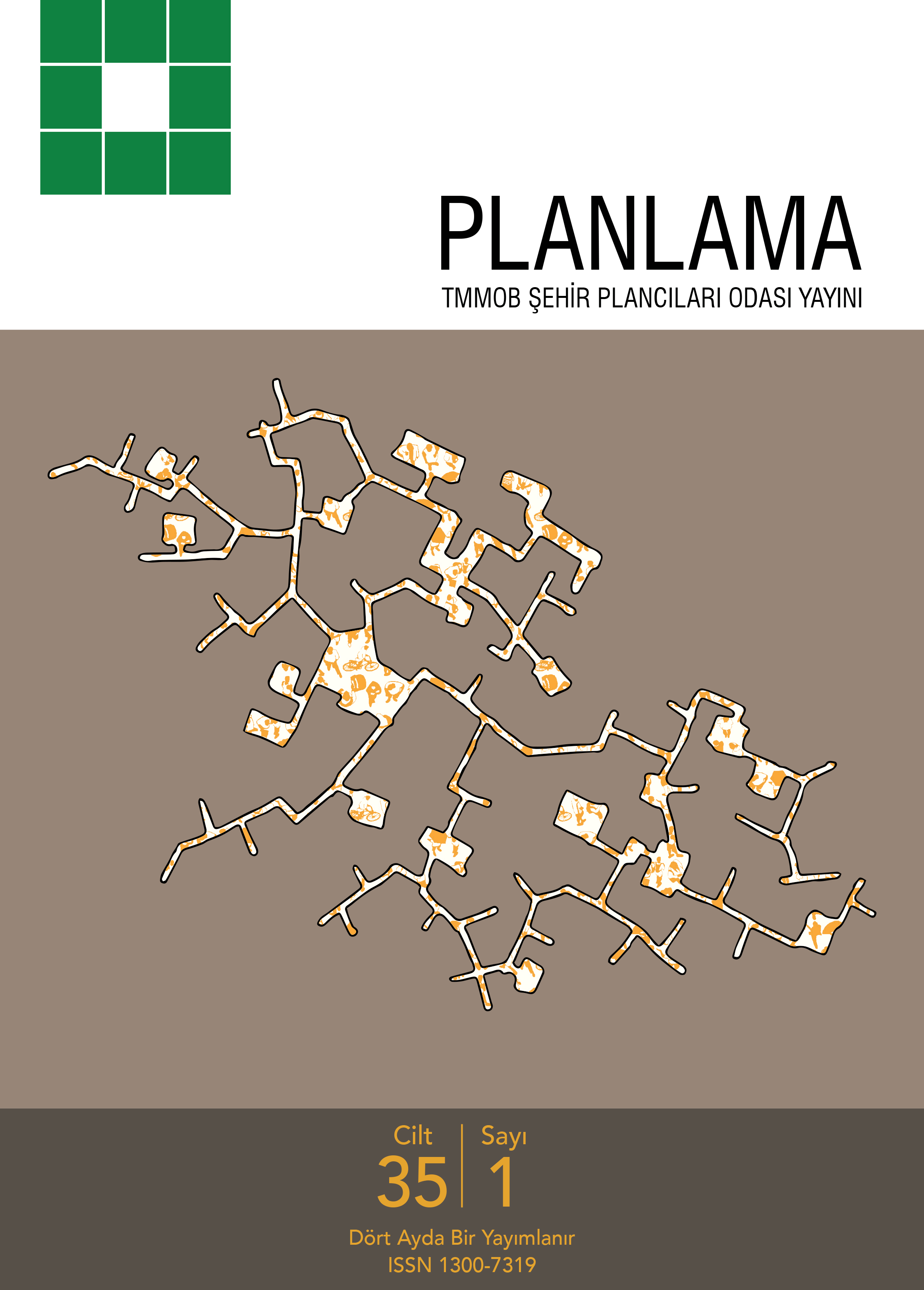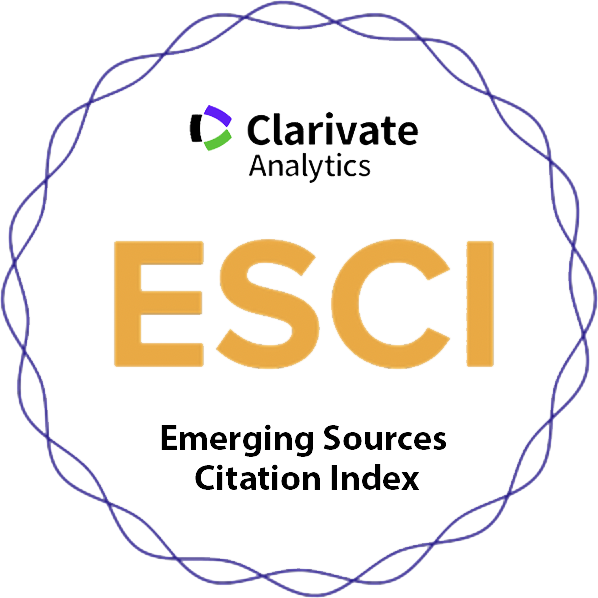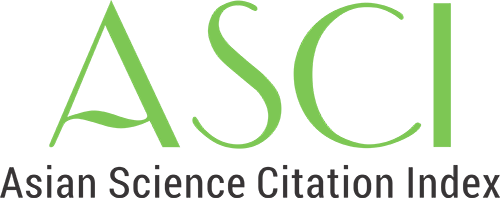Volume: 33 Issue: 3 - 2023
| OTHERS | |
| 1. | Front Matters Pages I - IX |
| EDITORIAL | |
| 2. | Editorial Page X |
| RESEARCH ARTICLE | |
| 3. | Interscale Analysis of Social and Spatial Separation within Settlements in Gated Communities: A Method Proposal Muhammed Cemil Doğan, Mehtap Özbayraktar doi: 10.14744/planlama.2023.04880 Pages 375 - 392 In the study, Can an analysis method be developed by analyzing social and spatial segregation from the scale of the city to the scale of the building element? and "While developing an analysis method; can social and spatial segregation indicators be reached within the scope of closed housing settlements that are spatially integrated and segregated in the study area?" answers to the questions were sought. With the developed four-stage analysis method, social and spatial segregation is handled at different scales. The scope of the research; It consists of settlements in gated communities located in Başak, Başakşehir and Kayabaşı Neighborhoods in Başakşehir district. In the urban scale analysis of the spatial segregation in the first stage; Using the Depthmap program, which uses space syntax formulas, closed residential settlements were selected and this data was taken as a basis in the study. In the second stage; The social and spatial segregation in the identified settlements was made on the neighborhood scale by using qualitative content analysis over the slogans in the sales advertisements. In the third stage, social segregation was examined at the neighborhood scale with the analysis of real estate values. In the fourth stage; The physical features that cause spatial segregation in the selected settlements were analyzed from the settlement scale to the building element scale.It has been determined that social and spatial segregation will increase with the discriminating slogans used in advertisements, the differences between sales values, the barriers that are impermeable and cut off the visual communication. |
| 4. | An Assessment of The Outstanding Universal Value of The Mardin Cultural Landscape Area and The UNESCO World Heritage List Nomination Process Nazlı Ece Geyik, Sırma Turgut doi: 10.14744/planlama.2023.57855 Pages 393 - 420 Human beings have felt the desire to preserve their own production throughout history. In the process, protection approaches have changed, and over time, they have evolved from single structure scale to structure groups and the settling scale. In this context, the phenomenon of protection has expanded by taking the tangible and untangible values produced in living areas into its own context. To this end, cultural and natural values, which are inherited from the past and are wanted to move to the future, are protected by universal qualifications and the common legacy of humanity. UNESCO gives the status of World Heritage(WH) to natural formations, monuments and sites that are internationally important and therefore worthy of admiration and protection. The values are protected in a universal dimension with the Convention on the Protection of World Cultural and Natural Heritage, which was implemented by UNESCO on December 17, 1975. In 1983, Turkey adopted the relevant agreement as the entity state. Thus, the natural and cultural values in Turkey have started to enter the universal-sized world heritage list. Mardin has been on the temporary list since 2000 and has been nominated for World Heritage List. It has been home to many civilizations since the 2000 B.C. and is now an ancient city with mul-ticolor and multi-layered socio-cultural and physical structures. The city,which is characterized by its historical structures and texture and socio-cultural components as world heritage, is an important example of cultural landscape with its tangible and untangible cultural values. The method of study was determined by evaluating literature by examining primary and secondary sources with onsite observations. In this study, the nomination process for. Mardins World Heritage List (WHL) is intended to reveal the historical memory and structures of the city, its cultural identity and its outstanding Universal values(OUV). In this context, all the interventions made for the city were evaluated and recommendations were made to transfer Mardin's tangible and untangible values as a whole to future generations and to be included in the World Heritage List as the concept of cultural landscape. |
| 5. | The Relationship between Urbanization, Energy Consumption and Carbon Dioxide Emissions: Panel Ardl Analysis for Newly Industrialized Countries Mehmet Akyol doi: 10.14744/planlama.2023.82788 Pages 421 - 431 An increase in the world population, technological advancement, and economic concerns bring along an increase in urbanization and energy consumption. Increasing urbanization speed and energy consumption cause environmental problems. The main hypothesis of this study is based on the idea that urbanization rate and energy consumption increase carbon dioxide emissions in developing countries. To test this hypethesis, the study analyzed the relationship between urbanization, energy consumption, and carbon dioxide emission specific to newly industrialized countries. Panel ARDL method was utilized in this study that scrutinized the years between 1990 and 2018. According to the long-term results of the analysis, urbanization negatively affects carbon dioxide emission in the country group aforementioned; energy consumption and economic growth that is control variable have a positive effect on carbondioxide emission. Regarding short-term results, only the energy consumption positively affects carbon dioxide emission while other variables are statistically insignificant. The results of the analysis reveal the necessity of policies towards smart city applications in reducing carbon dioxide emissions in newly industrialized countries. In addition, turning to renewable sources in energy consumption plays a key role in reducing carbon dioxide emissions. |
| 6. | The Applicability of Mixed Tenure Housing in Turkey Selin Çınar Erdüzgün, Füsun Çizmeci Yöreş doi: 10.14744/planlama.2023.83997 Pages 432 - 448 The process of urban spaces being commodified, driven by the forces of globalization and neoliberal policies, exacerbates disparities among city dwellers, leading to heightened urban poverty, the displacement of marginalized groups, and the emergence of social issues like segregation and polarization within urban communities. To prevent urban poverty, which is the source of numerous problems such as low income, inability to adapt to the city, squatting, environmental problems, illegal activities, and violence, and to guarantee spatial and social sustainability in cities, various policies are implemented. The "tenure mix" method is one of the housing approaches intended to address these issues and create sustainable settlements. Despite its significance in defining housing policies in other countries, mixed tenure has not been incorporated into policy and practice in Turkey, nor has it received substantial attention in academic discourse. One of the primary factors contributing to this phenomenon is the limited range of tenure variety in Turkey, coupled with the absence of a legislative framework supporting such diversity. The objective of this study is to examine the mixed tenure strategy through a comprehensive analysis of scientific research undertaken globally. The study aims to assess the potential benefits of this approach in addressing housing issues and to critically evaluate its feasibility within the context of Turkey. The concept of "mixed tenure" emerged in the late 1990s and has since been discussed in the literature. However, there is a scarcity of research that comprehensively examine this topic from many perspectives. In light of the intensification of studies in recent years and the subject's growing relevance, it is necessary to execute a comprehensive analysis of the topic. The present study employed a meta-analysis approach to assess publications pertaining to the subject matterthat were published in scientific databases during the years 2000 to 2022. The data acquired from this study is believed to have the potential to enhance the analysis of various forms of tenure in housing production and aid in the formulation of models that can provide effective solutions to address the housing issue. |
| 7. | Investigation of Walking Behaviours in Terms of Physical Activity: Gölbaşı District, Kızılcaşar Neighbourhood Leila Akbarishahabi doi: 10.14744/planlama.2023.01069 Pages 449 - 466 Physical activities such as walking have numerous health benefits proven by various studies. In this context, urban design projects should include implementations aimed at encouraging people to walk, and these projects should also be created considering the residents' demographic characteristics. This study aimed to determine the built environment features that affected individuals' walking frequency and duration while also looking into the impact of personal factors on walking behaviours. The study examined sample studies evaluating the importance of environmental and individual characteristics on walking behaviours, and a questionnaire was designed in line with the results obtained. The questionnaire was conducted with a total of 400 neighbourhood residents, consisting of adult women and men, living in the Kızılcaşar neighbourhood of the Gölbaşı district located in Ankara. The data obtained from the questionnaires were analysed with descriptive statistics, T-test, ANOVA, and Regression analysis. As a result of the analyses, environmental characteristics such as safety, landscape density, flat terrain and comfort, and visual diversity had significant relationships with the participants' walking frequency and duration. Additionally, the study confirmed that personal factors like gender, income and educational status impact individuals' walking frequency and duration. |
| 8. | Addressing the COVID-19 Pandemic with Urbanization Issues: The Case of Turkey İsmail Demirdağ, Elif Bengi Güneş, Çağla Hansu, Sunay Bilge doi: 10.14744/planlama.2023.44366 Pages 467 - 485 This study aims to reveal the non-random relationship between urbanization and the COVID-19 pandemic. This research, which uses urban built environment factors such as urbanization rate, rate, number and density of construction, and transportation and communication infrastructure, as well as demographic characteristics such as population, employment and education in 81 provinces in Turkey, aims to reveal how and to what extent different urbanization experiences affect the spread of COVID-19. Using datasets obtained from different institutions, this article firstly examines the relationships of urban built environment factors with the level of COVID-19 using Hierarchical Multiple Regression analysis. Then, by dividing 81 provinces into five different categories (very low, low, medium, high and very high) according to their COVID-19 case rates and applying MANOVA and ANOVA analyses, this article tries to reveal how the variables representing the demographic structure, together with the urban built environment factors, differ according to different risk groups. The findings of the study clearly reveal that urban factors play an effective role in the spread of COVID-19. Since Turkey is a country that consists of cities with different urbanization histories and development experiences, it is expected that the findings presented in the study will contribute to the understanding of current urban problems, especially within the framework of urban and public health, and to post-pandemic planning approaches and research. |
| 9. | The Rememberability of Religious Buildings: The Case of Tanjant Road Demet Yılmaz Yıldırım, Şeyma Bayram doi: 10.14744/planlama.2023.33602 Pages 486 - 505 Memorability has been handled in different disciplines such as psychology, philosophy, architecture, and planning. In architecture and planning, memorability has been approached through spatial perceptibility and collective memory, while in psychology, it has been addressed through the process of perception. The study is original in terms of synthesizing different disciplines' approaches to memorability. It has handled memorability both through the process and spatial perceptibility. Furthermore, the subject of study, Tanjant Road, is significant due to its role as one of the main horizontal axes that connects the eastern and western parts of the city of Trabzon, serving as a heavily used route for both vehicles and pedestrians within the city center. The aim of this study is to explain the rememberability of the religious buildings on Tanjant Road that establish a spatial or visual relationship with the road together with the processes of focus and persistence, two of the image formation stages. In line with the purpose of the study, physical analyses of the Tanjant Road and identified religious buildings along the road were conducted at the stage of focus, a rememberability analysis was conducted at the stage of persistence; and analyses about whether or not the users remembered these buildings and their locations were made at the stage of being remembered. The study identified the religious buildings related Tanjant Road that stand out at the stages of focus, persistence and being remembered, which are among the image formation processes. The study gives information about the design decisions that should be taken to reveal the religious buildings with strong rememberability, and to protect or strengthen the marks left by these religious buildings in memory. Discussing the remember process and the movement where perception is the strongest and for this purpose, the examination of a horizontal axis of Trabzon, which contains many historical and protected religious buildings, constitutes the originality of the study. |
| REVIEW | |
| 10. | Reflections on Kahramanmaraş and Hatay Earthquakes: Evaluating Syrian Refugees' Location Choices in terms of Earthquake Hazards and Risks Z. Ezgi Haliloğlu Kahraman doi: 10.14744/planlama.2023.58751 Pages 506 - 514 Turkey is both a seismically active country due to the complex combination of important fault lines passing through it, and a country of migration hosting the largest refugee population in the world. One of the concerns raised after the earthquakes of February 2023 is the possible serious impacts of earthquakes on Syrian refugees. Within this framework, this study aimed to examine the location choice processes of Syrian refugees in reference to earthquake hazards and risks. To do this, it evaluated the location choice decisions of Syrians at the city, settlement area and housing scales together with their social characteristics. The researcher's own studies on location choice, everyday life, residential satisfaction, integration and quality of life of Syrian refugees, and related research in the literature, as well as statistical data obtained from the website of the Presidency of Migration Management, were synthesized to reach hints about earthquake hazards and risks at different scales and dimensions. The findings of the study indicated that the majority of the Syrian population is dispersed in earthquake-prone cities, which increases earthquake risks for both the Syrian population and these cities. On the other hand, the lack of housing and settlement policies for Syrian refugees scattered throughout Turkish cities has forced them to take responsibility for meeting their own housing needs. This has led Syrian refugees having limited financial resources to resettle in poor/underdeveloped and/or illegal settlement areas of cities where they live in low-quality, neglected, unhealthy, and structurally problematic houses having disaster risks. Moreover, Syrians large family size, vulnerable groups including women, children and elders, and our inadequate knowledge on Syrian refugees due to their unauthorized movements within and between cities and their unregistered groups have increased their risk of being adversely affected by earthquakes. |
| OPINION LETTER | |
| 11. | Questioning of Urban Development Legislation in Terms of Disaster-Resilient Settlements in Turkey Savaş Zafer Şahin doi: 10.14744/planlama.2023.27136 Pages 515 - 519 Abstract | |
| OTHERS | |
| 12. | Reviewer Index Page 520 Abstract | |













